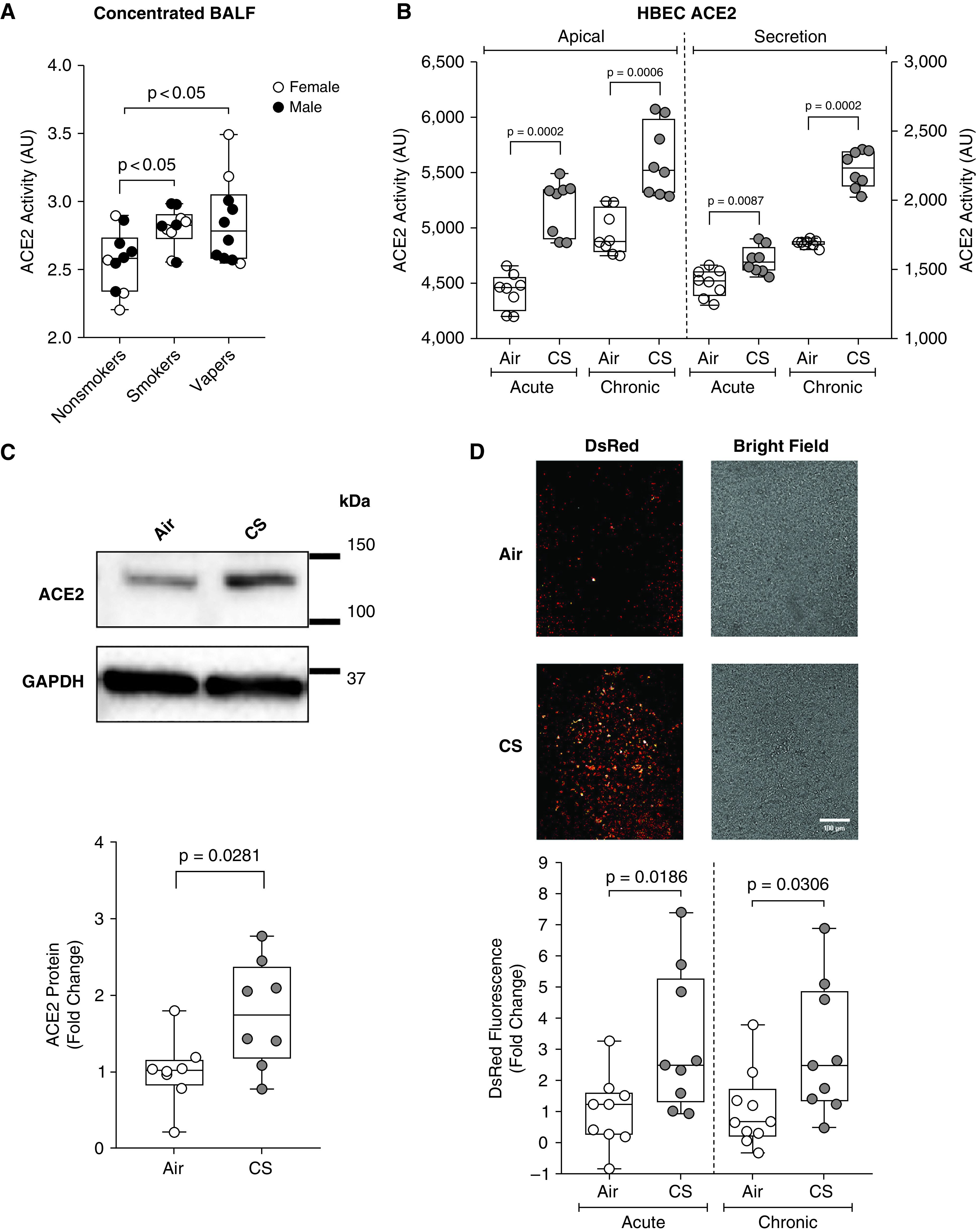Figure 1.

Cigarette smoke (CS) increases ACE2 (angiotensin-converting enzyme 2) activity and severe acute respiratory syndrome coronavirus 2 (SARS-CoV-2) infection. BAL fluids from nonsmokers, smokers, and vapers (n = 10 each) were concentrated, and ACE2 activity was measured by using 50-μM specific fluorogenic substrates. (A) Cleaved substrate–derived fluorescence shown as arbitrary units following 1 hour of reaction. HBECs were cultured at the air–liquid interface and exposed to smoke from one Kentucky research cigarette (1R6F) per day for 1 day (acute) or 4 days (chronic). The apical surface was washed with PBS to collect the mucosal secretion and 50-μM fluorogenic substrate was added on the apical surface to evaluate apical ACE2 activity. (B) ACE2 activity on the apical side of acutely and chronically smoke-exposed cultures and the corresponding apical washes. Activities are presented as accumulated fluorescence in arbitrary units of the cleaved products following 10 minutes of reaction. Whole-cell lysates were collected from chronically CS-exposed cultures, and ACE2 and GAPDH protein expression were evaluated by using immunoblotting. (C) Representative and GAPDH-normalized ACE2 expression in air- and smoke-exposed cultures shown as the fold change. (D) Acutely or chronically smoke-exposed cultures were apically exposed to a Spike pseudovirus suspension, and the resulting DsRed marker fluorescence was recorded after 3 days. Representative confocal microscopic images (SP8; Leica Microsystems) with the corresponding bright fields are shown above the DsRed fluorescence fold changes. Scale bar, 100 μm. Data are presented as the median and lower and upper quartiles; n = 8–9 per group from 3–4 different donors. P values are provided on the graph. AU = arbitrary unit; BALF = BAL fluid; CS = cigarette smoke; HBEC = human bronchial epithelial cell.
